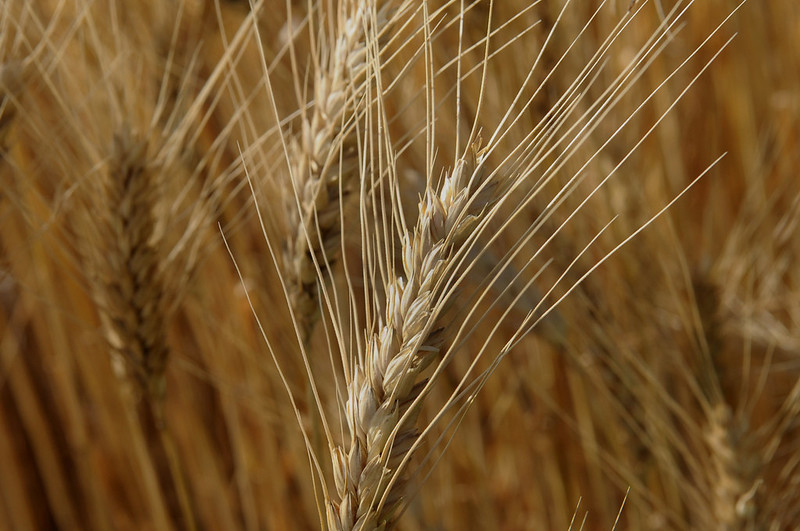
Much of Kansas wheat is currently rated good to excellent, but spring weather may ultimately determine the success of the current year's crop. | Download this photo.
Kansas wheat battling through tough conditions
Crop still rated as good to excellent heading into spring
Feb. 6, 2023
By Pat Melgares, K-State Research and Extension news service
MANHATTAN, Kan. – No need to tell Kansas wheat producers, but drought has really been a bummer for the hard red winter wheat crop.
On Jan. 17, the USDA’s Economic Research Service reported that 59% of the winter wheat production in the United States is within an area experiencing drought. The Kansas wheat crop is still rated as good/excellent, according to the USDA, though its ratings for the Sunflower State dipped slightly between November and January.
“You never want to count a wheat crop out; we talk about it being the crop with nine lives,” said Jeanne Falk Jones, a multi-county specialist with K-State’s Northwest Research-Extension center in Colby. “But some would say we ran through a few of those lives trying to get to this point in the growing season.”
Listen to an interview by Samantha Bennett with Jeanne Falk Jones on the weekday radio program, Agriculture Today
Falk Jones said much of the Western Kansas wheat was planted in “extremely dry” conditions, creating variability in wheat stands in the late fall and into this spring.
“We had some wheat that was pretty well established, some with two or three tillers on those plants and had a good root system under them,” Falk Jones said. “Then we had other fields that may have been just down the road where wheat had not even germinated last fall because it was in such dry conditions.”
Sub-zero temperatures delivered another punch to the hard red winter wheat crop, Falk Jones said. Wheat will better withstand cold temperatures if the soil is moist, but in areas where that ground was still dry, the conditions had “an additive effect on some of the stress those plants endured,” according to Falk Jones.
“All of this is playing into how we think about wheat’s chances of greening up this coming spring,” Falk Jones said.
In the past year, precipitation in Kansas was about 10 inches below normal, but the news isn’t all bad. In January, Falk Jones said, the Kansas Mesonet reported that the state was ahead of average by .85 of an inch.
“That is exciting,” Falk Jones said. “We’re happy to have every bit of that. It’s going to help support some of the root growth and growth of spring tillers in our wheat.”
“We’re moving forward,” she added, “although at the moment, our wheat is in a dormant period. While it’s still having respiration out in the field, it’s very slow, and we’re not seeing a lot of growth. We won’t see the visual effects of (recent) moisture until we start to warm up in the spring.”
Kansas is the nation’s leading wheat producer, known for hard red winter wheat that is used for whole grain white bread and other whole grain products.
According to the Kansas Department of Agriculture, the state’s growers harvested 7 million acres with an average yield of 52 bushels per acre in 2021. This accounted for 10.4% of the state’s total agricultural receipts and 22.1% of the nation’s crop.
KDA estimates the direct impact of wheat production in Kansas at $1.3 billion in output and 3,231 jobs.

